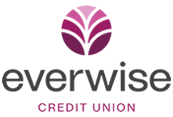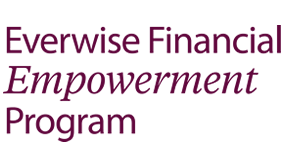Leading an Active Life
- Details
- Written by The FoolProof Team
- Category: Articles

Staying active and engaged in the life of the community is a vital key to well-being and independence. People who volunteer with organizations and causes they support, for example, enhance not just their sense of vitality but their physical health. That's what the research shows.
There are lots of ways to stay active: In addition to the resources on volunteering in this section, you'll want to check out our travel and leisure resources. Staying active can also be enhanced by how you design or redesign your home to be accessible and support independent living for the long-term.
Volunteering
Interested in helping out in your community? There are numerous ways you can lend a hand. Check out these resources for ideas.
Benefits of Volunteering
The volunteer efforts of citizens certainly enhance the community, but did you know that the volunteers benefit, too? Here are just some of the pluses.
Making new friends and getting to know more about the community. For some, growing older means a shrinking pool of friends, but not for volunteers.
Experiencing new opportunities and conquering new challenges. Doing something "different" or mastering new challenges is the zest of life for many. Volunteers can tackle the "thrill of new adventures" while giving back to their communities.
Enhanced sense of well-being. Medical, psychological and social research shows that all volunteers—and particularly older adult volunteers—experienced better health and less depression.
Better health. Adults older than 65 who volunteer have better health, better functional abilities, and an increased lifespan.
Making a difference. Helping others boosts self-esteem.
Possible tax deductions. This may not be your main reason, but if your volunteer expenses aren't reimbursed and you itemize on your federal income tax, mileage and other specified travel expenses are deductible.
Find a Local Volunteer Opportunity
There are many opportunities to volunteer within your local community. The key is knowing where to look. If you're interested in volunteering with the police or fire departments, local government offices, library, parks & recreation departments or other public services then check out the community websites. Some communities have programs that match volunteers with needs.
The following are just a few of the many sites that list volunteer opportunities.
- Serve Indiana manages various programs and inititatives to engage Hoosiers in service and volunteering. Programs include AmeriCorps and Academic Success.
- Serve Indiana: Volunteer Centers - listed by county
- Volunteer at the State Library
- Volunteer at the Indiana Veterans' Home
- Volunteer with the Indiana Department of Natural Resources. Areas include Cemetary and Burial Ground Registry, Fish & Wildlife, Historic Preservation & Archaeology, Hoosier Outdoor Experience, and State Parks.
- Volunteer at the Indiana State Museum and Historic Sites
Volunteering Beyond the Local Community
For opportunities in other areas of the country try VolunteerMatch. The site also lists several national volunteer organizations.
You may also want to check out AARP's Giving Back—Volunteering page. You can volunteer with AARP's programs or find an opportunity in your area.
Senior Corps supports the Foster Grandparents, Senior Companions, and RSVP (Retired and Senior Volunteer Program) programs.
Ensuring That Your Home is Accessible Long-Term
Many new homes are being designed to be comfortable, pleasant, and accessible to any person — young, old, with and without disabilities. Existing homes can also be made accessible—some with only minor modifications—others may take more extensive changes.
As you move into your retirement years, you may plan on staying in your current home or you may decide to move. In either case, it's important to ensure that your home continues to meet your needs well into the future and that you can remain in your home as long as possible. This means creating an accessible home that hopefully helps you gracefully "age in place."
What is accessible housing? For many people, accessible housing means that the home is suitable for someone in a wheelchair. A broad definition is a home where a person can do what they need and desire to do as independently as possible. This definition covers everyone, not just those who use a walker or wheelchair.
Toured any new homes recently? They probably have accessible features such as lever-style door handles, specific task lighting, slightly lower light switches, slightly higher electrical outlets, and programmable thermostats. The Aging-In-Place Design Checklists from the NAHB Research Center lists items to consider when looking for housing or when considering modifications. NAHB is the National Association of Home Builders.
In this report, we look at resources in these areas:
- Universal Design and Adaptive Design
- Adapting a Home for Independent Living
- Funding Home Adaptations or Accessible Housing
1) Universal Design and Adaptive Design
The goal of universal design is to create homes, workplaces, other environments, and products that are easy to use and attractive for persons of all ages and abilities. The principles of universal housing design may be applied to both new construction and renovations. Individuals with disabilities may also require specialized or adaptive design to tailor their living spaces to individual needs.
Design and Information Sites
These organizations and web sites provide information on the principles and guidelines for universal and/or adaptive design, and a range of educational and planning resources.
Center for Universal Design, part of the School of Design at North Carolina State University, is a "national information, technical assistance, and research center" in the field of universal design. This site provides extensive information about universal design. It also provides information about fair housing practices, home modifications and accessible and universal design features in homes. You can also view examples of new homes built using universal design principles. The site offers a number of online resources and publications and links to other organizations.
IDEA - Center for Inclusive Design and Environmental Access
IDEA began its work based on the concepts of accessible or "barrier free" design and expanded to the concept of universal design. The center provides "resources and technical expertise in architecture, product design, facilities management and the social and behavioral sciences" with the goal of improving the design of places and products so that they are usable by "a broad range of people, including people with disabilities and other often overlooked groups."Universal Design in Housing
This article by Ronald L. Mace, F.A.I.A. on the Adaptive Environments web site provides a comprehensive overview of all the elements of universal design for accessible housing as well as some specific criteria.Informed Consumer's Guide to Accessible Housing
This article from ABLEDATA provides a good overview and introduction to "legal and practical aspects of accessible housing." There are also links to additional related resources.
Online Resource Guides and Databases for Universal and Accessible Housing Design
Accessible Housing Information Center
This page contains a listing of all of the resources relating to accessible housing and universal design that can be found at the ABLEDATA website.Accessible Design Resource Page
This page is one topic on the website of disABILITY Information and Resources. It has links to a number of online and print resources. This service and the website—makoa.org—is maintained by Jim Lubin, a C2 quadraplegic. Makoa is the Hawaiian word for "courageous."
2) Adapting a Home for Independent Living
In addition to information on accessible housing design, these websites provide specific tips, guidelines and resources for adaptive housing projects both new and modified.
Infinitec.org has a useful section on home modifications that includes possible modifications room by room.
National Resource Center on Supportive Housing and Housing Modification
This university-based research and advocacy group provides information including resources for designing and building housing or modifying housing that enables aging individuals and individuals aging with disabilities to live independently. Much of their information is useful for persons and families of all ages.What is Universal Design?
This section from AARP discusses universal design modifications appropriate for each room of a home including a checklist for each room.Home Changes: Accessible Home Modifications Can Make Your Life Easier
This article by a contracting firm specializing in adapting homes discusses the types of modifications possible, particularly for wheelchair accessibility, and provides links.The Design Linc presents design tips for creating accessibility to both the exterior and interior of a home. The site also has samples of accessible and adaptive products and fixtures for the kitchen, bathroom, bedroom and laundry. There are links to other organizations, resources and product manufacturers.
The National Easter Seals Foundation
Provides information and resources for shopping for accessible housing, for adapting housing including tips and a home checklist. Easter Seals promotes increased awareness and availability of accessible housing, and also provides information on making a home more safe and accessible.The Accessible Kitchen and The Accessible Bathroom
These articles by Leon A. Frechette from asktooltalk.com provide an overview of criteria, resources and products for creating accessibility for these areas of the home.Accessible Landscapes: Designing for Inclusion
This design booklet, available online, covers the principles of accessible outdoor landscapes and provides examples of inclusive paths, plazas and furniture. Directed primarily to public spaces, it also has useful ideas for homeowners.
3) Funding Home Adaptations or Accessible Housing
A number of programs exist at the national, state, and local level that provide design or financial assistance to help persons with disabilities either modify existing homes or locate and purchase or rent accessible housing. Identifying the programs for which you may qualify and which are available in your geographical location can be a daunting task. The resources on this page may help you get started.
Locating Potential Funding Assistance
Though grant, loan and assistance programs may be funded at the federal level or state level, application for and delivery of service frequently takes place at the local level. The following articles, even where written about a particular project or a particular state, offer an overview of the typical available resources and search/application processes.
"Housing Information You Can Use" is a booklet published by The Cape Organization for Rights of the Disabled (CORD), an independent living center. It provides a good overview of how to locate and finance accessible housing.
"How to Pay for It?" from Infinitec.org discusses various potential sources of funding assistance for home modifications and provides links where available.
Informed Consumer's Guide to Funding Assistive Technology from ABLEDATA provides helpful information for how and where to search for funding resources for accessible or adaptive housing and modifications. It also lists specific resources for each state and provides links where possible.
Sample Funding Agencies or Programs
The following sites represent a sample of some programs available nationwide.
Fannie Mae has mortgage loan products designed to meet the special needs of people with disabilities or the needs of people who have family members with disabilities living with them. These mortgage loans include the Community HomeChoice™ program, which offers "greater flexibility in qualifying and underwriting standards; and acceptance of nontraditional credit histories." Community HomeChoice™ Loans are offered through Fannie-Mae-approved lenders and agencies or coalitions.
Rural Housing Service of the U.S. Department of Agriculture has a number of direct loan and grant programs to enable rural Americans to own a home or to repair a home. Several programs are specifically designed for persons who have disabilities, are elderly, have low income, or a combination of these factors.
On its extensive website, HUD, the U.S. Department of Housing and Urban Development, has created a special section with information for disabled persons that provides links to relevant information about various programs offered by HUD.
Assistance Listings allows individuals to search its database to identify a variety of federal assistance for which they may qualify. The catalog contains programs that are available through state and local government and private agencies as well as direct programs.














